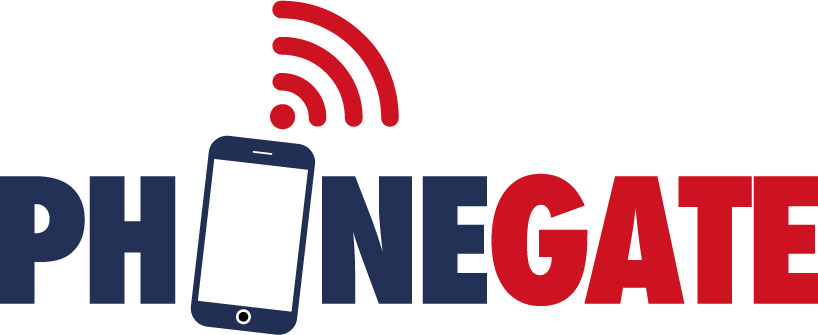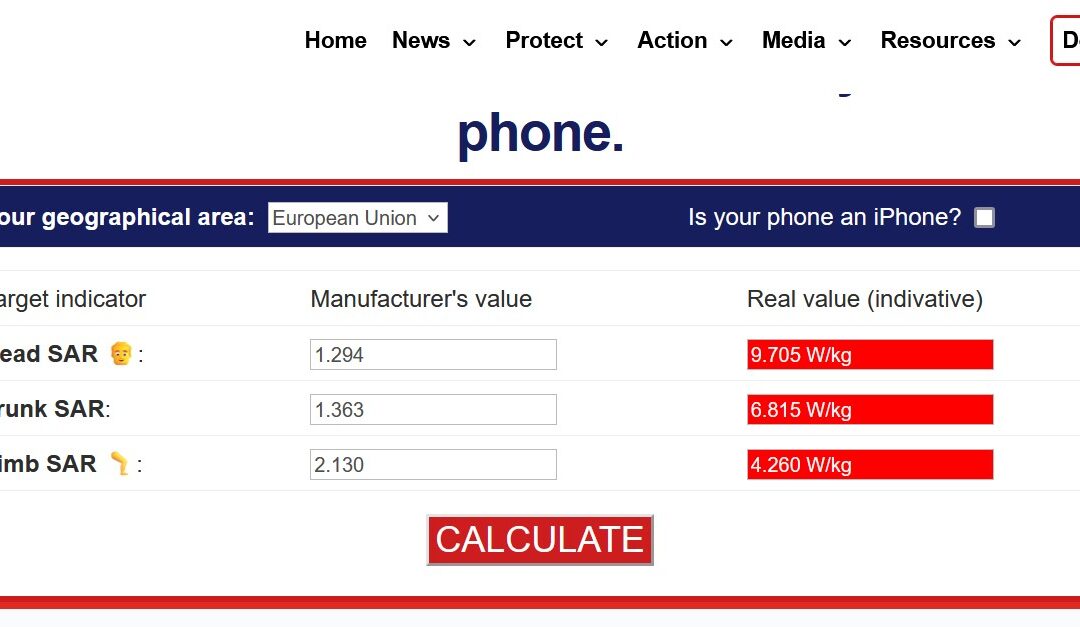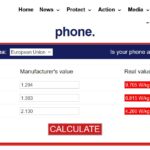Official values mask a disturbing reality
The new Samsung Galaxy S25 and S25+ feature SAR (Specific Absorption Rate) levels claimed to comply with European standards. Here are the official values provided by the manufacturer:
| Model | SAR head (W/kg) | SAR trunk (W/kg) | SAR limb (W/kg) |
|---|---|---|---|
| Galaxy S25 | 1.294 | 1.363 | 2.130 |
| Galaxy S25+ | 1.257 | 1.257 | 2.880 |
However, these figures do not reflect users’ actual exposure under normal conditions of use. Our actual SAR calculator reveals much higher levels:
| Model | Actual SAR head (W/kg) | Actual SAR trunk (W/kg) | Actual SAR limb (W/kg) |
|---|---|---|---|
| Galaxy S25 | 9.705 | 6.815 | 4.260 |
| Galaxy S25+ | 9.427 | 6.285 | 5.760 |
These values far exceed European regulatory limits, set at 2 W/kg for the head and trunk and 4 W/kg for the limbs. This was also the case just recently for the Galaxy S24!
Manufacturers, an obstacle to the evolution of standards
Since 2020, France has officially asked the European Commission to modify the rules for measuring SAR, by requiring that it be calculated in direct contact with the body, and not at a distance of 5 mm, as is currently the case for SAR trunk 12. This request remains unanswered, largely due to the resistance of manufacturers, who continue to favor measurements far removed from actual use.
Dr Marc Arazi, President of Phonegate Alert , denounces this inertia:
“It is unacceptable that five years after the formal objection lodged by France, nothing has changed. Manufacturers like Samsung continue to rely on obsolete standards to mask the true exposure levels to which users are subjected on a daily basis.”
This strategy enables manufacturers to display compliant values on paper while avoiding costly modifications to their devices.
Samsung already nabbed for exceeding SARs
This isn’t the first time Samsung has come under fire for its SAR levels. In 2022, the ANFR (National Frequency Agency) sanctioned the South Korean manufacturer after measuring a SAR trunk of 3.024 W/kg on its Galaxy Z Flip, well above the authorized limit 1. Despite two software updates, Samsung had to pay an administrative fine and correct its model. These precedents show that manufacturers often take corrective action only after being forced to do so by regulators.
Why such inertia?
Manufacturers have every interest in maintaining current standards to avoid having to redesign their devices or limit their emission power, which could affect their performance or connectivity 56. What’s more, financial penalties remain low: a fine of 7,500 euros, such as that imposed on Samsung in 2022, is derisory for a global giant 1.
An urgent call for transparency
The revelations surrounding the Galaxy S25 and S25+ are part of a series of cases highlighting the discrepancy between official and actual SAR 5 values. It is urgent that manufacturers such as Samsung, Google, Apple, to name but a few of the leaders, assume their responsibilities and stop exploiting regulatory loopholes to the detriment of public health. European authorities must also speed up the revision of standards to ensure a more realistic measurement and effectively protect consumer health from overexposure to electromagnetic waves.
On the same subject:






